Over the last many years, I have rarely missed the graduating students’ exhibition and display of their examination work as well as selected artworks created by them over their years of study at the Faculty of Fine Arts, in my small town. This is a time-tested and popular practice in Art and Design schools across the world. In my small town, it is generally held in the last week of April or early May. Galleries, collectors and art writers throng these passing-out student shows in a bid to spot young talent, understand what they are thinking about, exploring in their artworks, and, most importantly, which artists to pick and choose for possible ‘promotion’ in the coming few years.
But it is also a time for families of students to visit the Faculty, see what their ward has created and be exposed to what their classmates have as well. Though there will always be a certain percentage of students coming from artist-families, most students are from ordinary non-artist families. They must have had a hard time convincing their parents to let them study the fine arts, a field where their future is uncertain, unknown. Boys deal with a much tougher situation here and it is not unusual to find several male applicants to the fine arts courses to have already finished their under-graduation in science or commerce before they pick up the courage to walk into the Fine Arts campus.
Dharti Prajapati (Sculpture) comes from a family of potters. This work is her tribute to her father’s back-breaking struggle and the quality work he created in terracotta over many decades.
So when I am at the display exhibition, in addition to looking at the artworks on the walls, I have a great time watching dotting parents walk around proudly with their child and his/her friends, of smiling grandmas resting on a stool under a fan for a minute while the younger family members stroll around the exhibition hall and explore different studios, and sometimes, I am also quite amused to see the nonplussed look on the faces of some of the elders as they are accosted by artworks that leave them literally speechless!
Krisha Bhuva (Painting) ‘explores a dreamyland that comes out from my imagination. This ethereal space serves as the backdrop for my artistic narratives, populated by figures drawn from my inner world and those I observe in my surroundings’.
But there has been a marked difference between the general jubilant mood and extend of artworks displayed by the graduating students at the exhibitions before 2007 and in the years thereafter. Why 2007, you may ask? That’s the Chandramohan year, in case many may have forgotten, when things went out of control in more ways than one, and several persons had to pay the price, most of them being the final year students whose artworks few could see as the exhibition was closed within a few hours of its opening and it was some months if not years before these artists managed to interest commercial galleries in supporting them. Unfortunately, this year was almost immediately followed by a steep fall in the global financial markets that directly affected art-buying, and this situation continued for quite a few years. After it slowly steadied, but still wobbly, the demand in India turned to artists of the ‘Modern’ period, rather than Contemporary and Young artists. And then there was COVID. It is only in the last year or so, that the art market has been looking up for young artists.
Naisarg Patel (Graphic Arts). ‘People have noticed and appreciated the childlike innocence and imperfections in my drawings …’
So, what was this display exhibition like pre-2007? Firstly, it went on, officially, for 3 days (it’s 2 days now), but one could go a day or two earlier and visit those departments where the viva exam was over. Why this hurry? Because the departments would overflow with so much student work that it would really take you at least 3 full days to make sure you saw the exhibits behind the canteen, in the canteen, in the Art History classrooms on the first floor, in the first floor classrooms above the Printmaking or Graphics department, installations set up the open Garba ground, the ground opposite the Admin building, and the open ground behind that building and the Applied Arts department in the far end.
Manonita Karar (Graphic Arts), ‘My journey with art started with the urge to find something that I can call ‘my own’ … To come to terms with that, to understand my chaos and dilemma, creating visuals works as a medium of release for all those inner conflicts, doubts and questions, In the end those remain confined to these sheets of paper, openly unresolved’.
And of course, there were displays in and around the old Pushpa Baug building, which are no longer allowed because that poor, once-sturdy heritage building, was completely compromised by the University authorities who gave the ‘repair and conservation’ job to some unscrupulous builder who replaced all the extensive old Burma teak ceilings with cardboard copies (I swear that’s true for I have seen the collapsed cardboard ‘ceiling’ myself as I was one of the signatories on the team, from Heritage Trust, that the University had formed to ‘look into’ this kind of gruesome crime. Of course, that’s the last we heard of it in my Sanskarnagari).
Subhasmita Ghadei (Painting), Installation with Palm Leaf.
Post-2007, students considerably reduced the artworks they put on display, often limiting their display area to only those required for the practical examination and a few more. The display now takes less than three hours to check out at leisure. It did not mean that the students did not work hard enough, but more artworks meant more money needed for the raw materials and with a dull art market, it was not the choice for many. Also at every display post-2007, some mischief-makers would show up identifying some artwork that ‘offended them/their religion/culture/whatever’. They would violate the artwork, even destroy it, and often rough up the student. They would come accompanied by the media, always sniffing around for a nasty story. And then the Faculty would immediately close the exhibition. Irritated gallerists and art collectors coming in from out-of-town would be stranded outside closed gates of the Faculty.
Amiya Ranjan Ojha (Graphic Arts). ‘Etching, wood cut and drawing in black and white became an important way to express my disappointment, empathy, and the privilege I have in present as an observer’.
This led to the University forming some kind of a Censorship Committee that would check every exhibition held at the Faculty Exhibition Hall. If they found anything ‘offensive’, the artist would need to take that off the show. (Recently, three students of a local school decided to put up an exhibition of their examination work for Class XII. Late on the eve of the show, the team came to see their work and decided one was ‘offensive’ and had to be removed. The shocked kid was inconsolable. Fortunately, she had another one ready that could replace it and the show went on.) This kind of censorship has caused both students and teachers at the Faculty to be more careful than necessary, often suppressing the really ‘out-of-the-box’ thinking that this Faculty was known to encourage and nurture.
The new kiln at the Ceramic workshop in the Sculpture department.
The moment of truth : Students examining their ceramics after the firing is over and the kiln door is opened!
This year’s display exhibition was interesting, with some really exciting works. I was pleasantly surprised to see clay back in full form. For several years, the ceramic workshop in the sculpture department sported a big lock. Early this year though, the department was gifted a large kiln by late Neelma Nagpal from Happy Potters’ Studio, Ahmedabad. This was followed by a Ceramics workshop held in the memory of late ceramist and faculty member, Jyotsna Bhatt, and supported by Purushottam Public Art Trust. More than 60 students from across the Faculty attended, rejuvenating an interest in clay and terracotta work, use of glazes, and finally, the firing. This interest was reflected in the extraordinary number of terracotta and ceramic sculptures and functional ware that was spread across the display exhibition and overpowered all other mediums. And no wonder as there were close to 70 firings that the students and teachers carefully executed in the last four months. As in the earlier years, a number of students of Painting had opted for Ceramics as the elective and it was interesting to see these ‘painters’ deftly working around exciting forms in 3-D in their clay works exhibited on the side.
Students at the Ceramics Workshop conducted by alumnus, Falguni Bhatt.
As always, a visit to students’ exhibitions is always a delight as you invariably see a bright spark or two that warms the cockles of your heart. And then, to revive old college memories, there is the canteen chai and bun-amlet … Paradise?

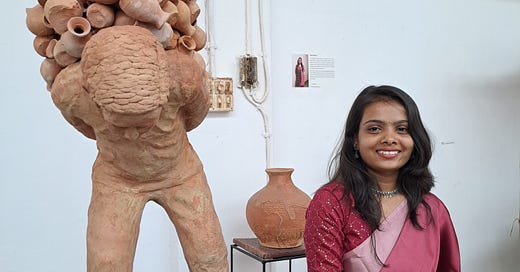




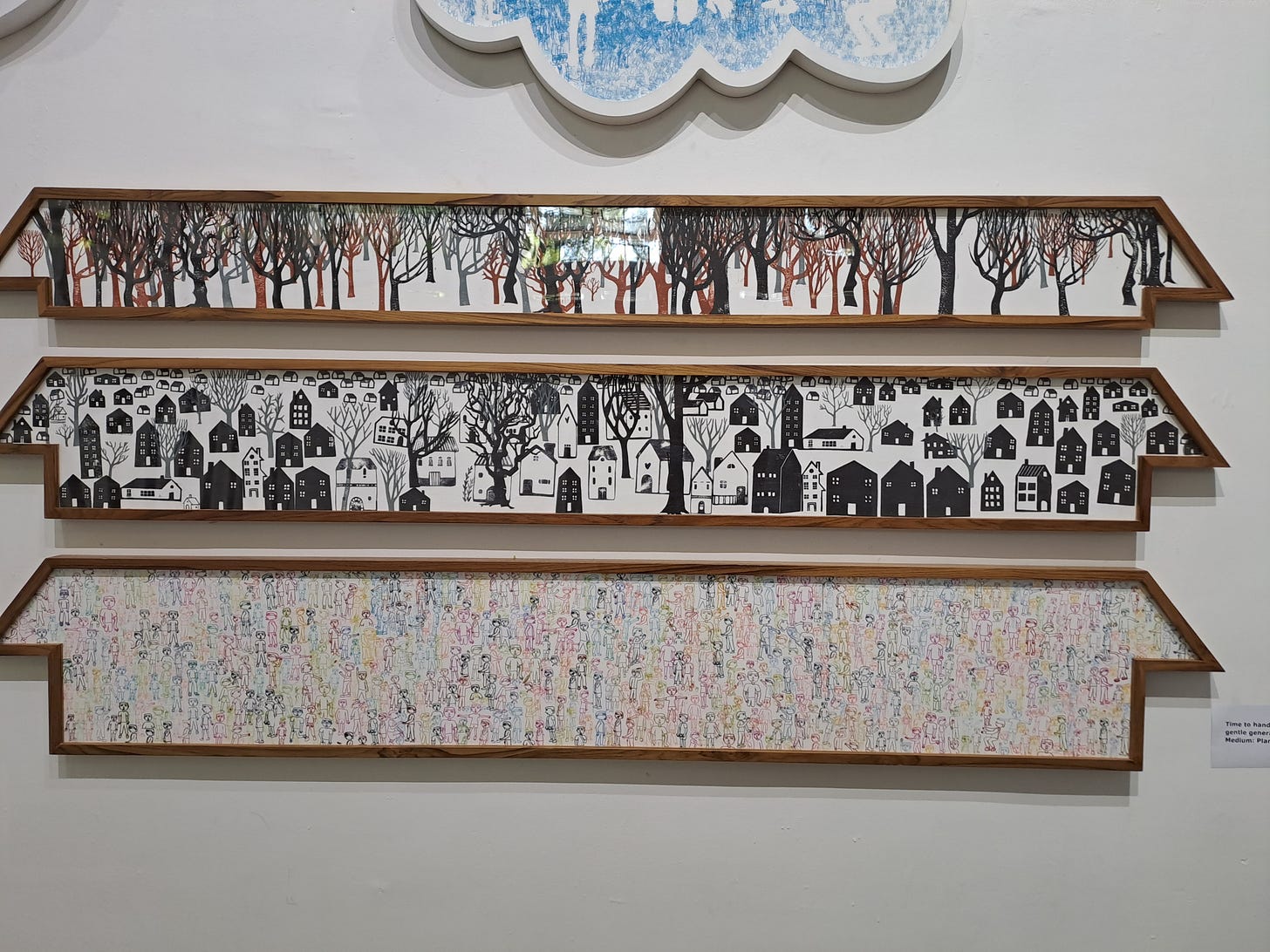
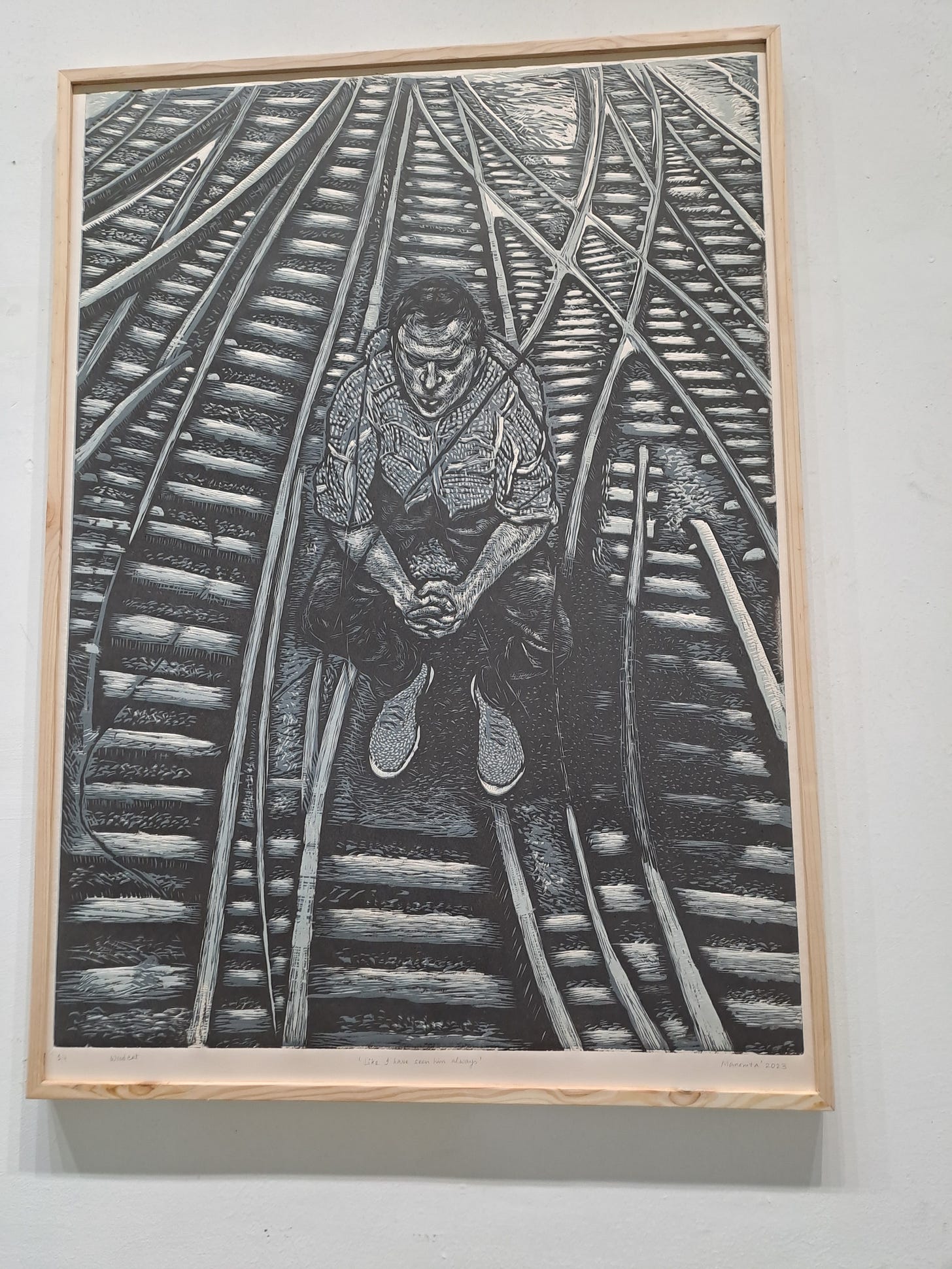
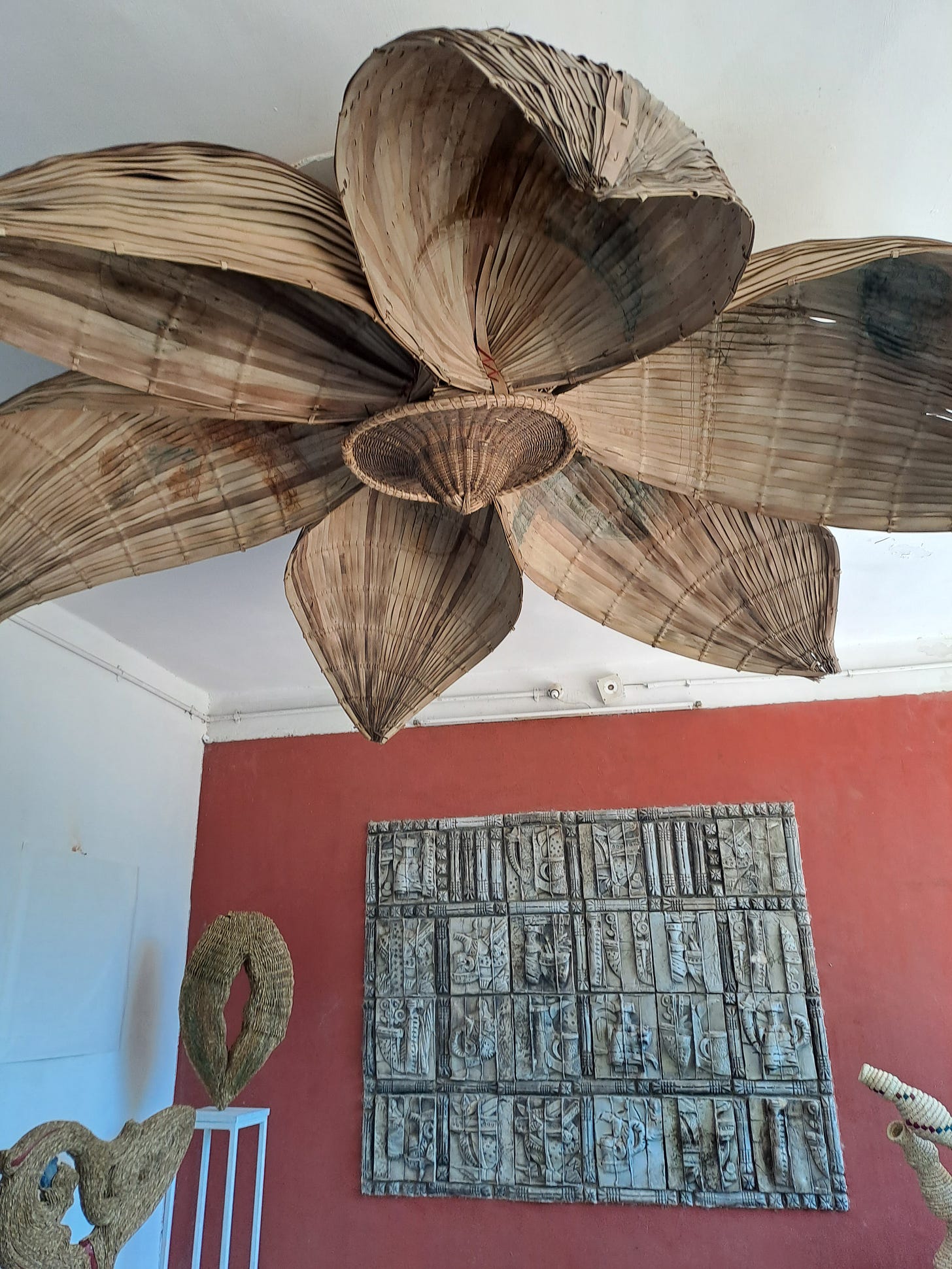
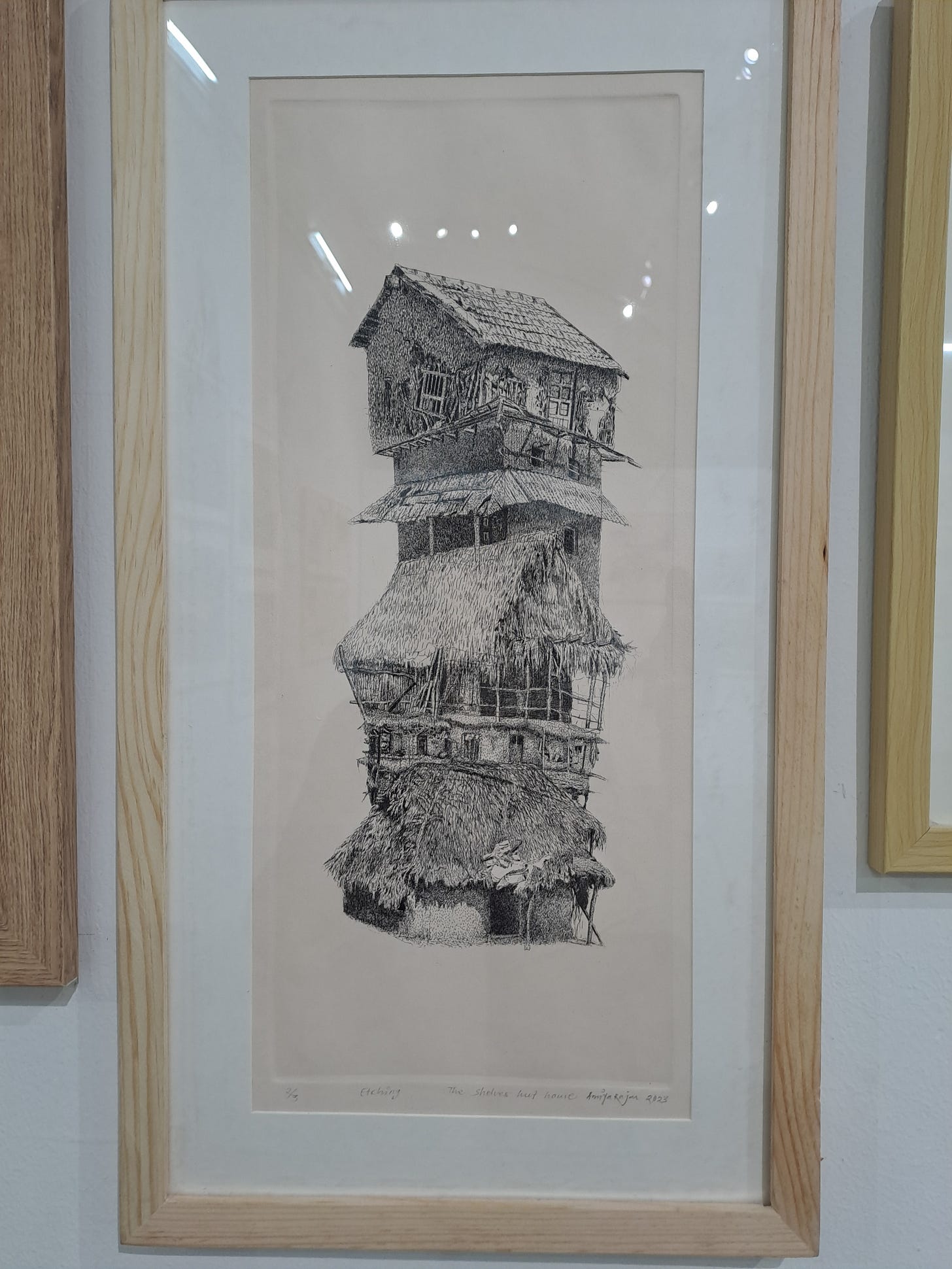

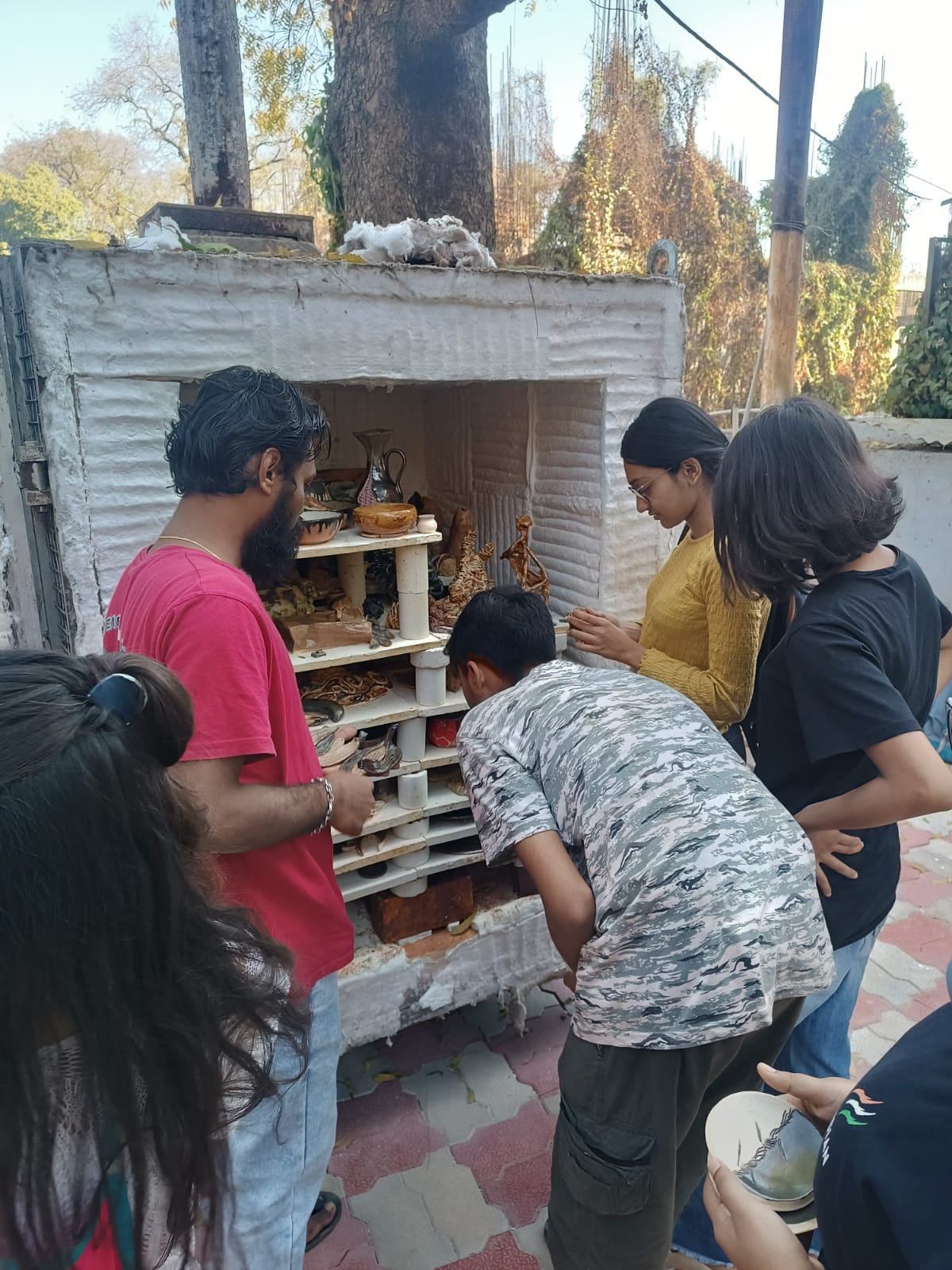
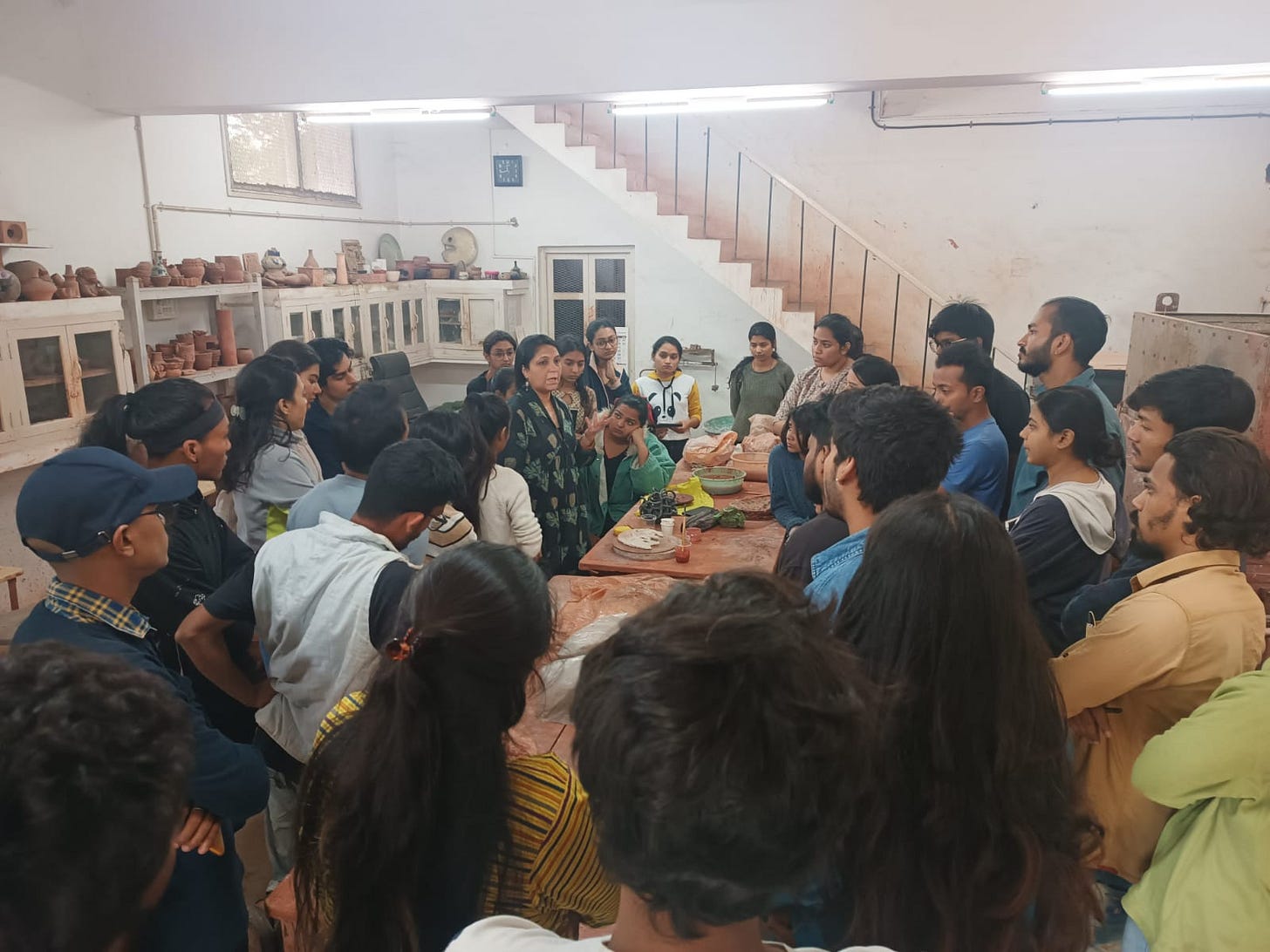
While reading this article, I recall you had also written about our exhibition in Times of India in 1981. I was a student and had completed my masters degree in Painting and our examination display of works were put up for public viewing. That time not many galleries were in existence but few buyers would visit and at times purchase works for there collection.
Missed it this time as was out of town your writeup makes it up saw some pictures too